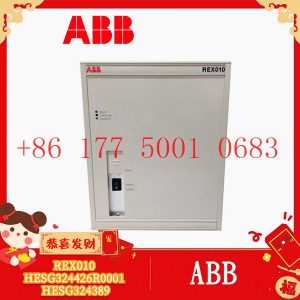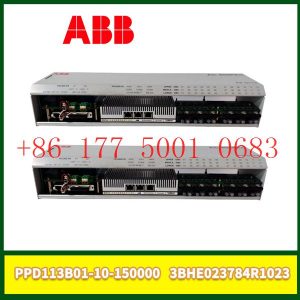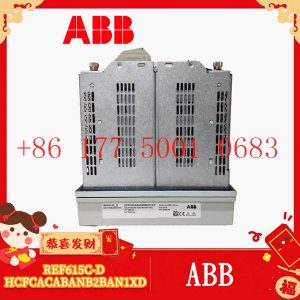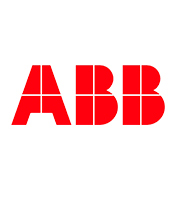Description
hardware flow control. It is an ideal choice in the field of industrial automation.
Domestic Industrial Robot Industry Trends in 2020 my country’s market still contains huge power
In 2016, the density of industrial robots in my country was 68 units per 10,000 people. In 2018, the density of industrial robots was 140 units per 10,000 people, which is
higher than the global average of 99 units. According to the “Robot Industry Development Plan (2016-2020)”, the density target of domestic industrial robots in 2020 will
reach 150 units/ten thousand people, and market demand will be further released. In addition, in
he long run, the density of industrial robots in my country is far smaller than that of several developed countries with higher levels of automation, and the domestic market
demand still contains huge development potential in the future.
Strong market demand has driven China to become one of the main sources of income for the four major families of Germany”s KUKA, Switzerland”s ABB, Japan”s
FANUC and Yaskawa. As the world”s largest industrial robot market, China has attracted the collective attention of the four major families, and its business in China has also
become an important engine for the growth of the four major families” business income.
1. The four major families account for 40% of the global market and nearly half of the market in China.
Globally, the first echelons in the field of industrial robots are KUKA of Germany, ABB of Switzerland, FANUC of Japan and Yaskawa.
The revenue of the four major family robot businesses continues to grow, accounting for nearly 40% of the global market share. From 2006 to the present, except for 2009,
when the four major families suffered a sharp decline in revenue due to the aftermath of the financial crisis, the remaining years have seen steady growth. From 2010 to 2017,
the CAGR of the robot business revenue of Yaskawa, ABB, KUKA, and FANUC was 6.58%, 11.05%, 12.96%, and 10.74% respectively, which is basically consistent with the growth
of the global industrial robot market. The robot business of the four major families has always occupied the main global robot market. In recent years, affected by
the rise of manufacturers in the robot segment and the rapid development of Chinese robot manufacturers, the market share has gradually declined, but it still remains above 40%.
In 2016, the four major families” global robot business The revenue proportion is 41.19%.
The four major families account for more than half of the domestic market
The four major families have different business focuses. KUKA”s business mainly focuses on robots and system integration, which are widely used in the automotive field
and have core customers such as Mercedes-Benz and BMW. ABB focuses on electric motors and motion control, which are used in the electronics, electrical and logistics
industries, and are also widely used in highly
mature automobile production lines. FANUC CNC system technology leads the world, and its process control is more efficient and convenient than other companies.
Yaskawa mainly focuses on the fields of servo motors and motion controllers, and is the first company in Japan to manufacture servo motors.
In 2012, foreign robot companies represented by the four major families of ABB, KUKA, Yaskawa Electric, and Fanuc accounted for more than 90% of the Chinese robot
market. Among the 90% of the robot market share, the four major families of ABB, Fanuc, Yaskawa Electromechanical, and KUKA account for 57.5%. The next three major
manufacturers, OTC, Panasonic and Kawasaki Heavy Industries, accounted for 16%. The market share of domestic robot manufacturers is relatively small. According to
statistics from Huachuang Securities, the market share of local brand robots in 2012 was only 8%.
According to IF R statistics, the total installed capacity of China”s local robots in the domestic market increased from 22% in 2017 to 27% in 2018;
while the installed capacity of foreign brands (including products produced in China by non-Chinese suppliers) declined 7%. At present, my country”s
industrial robot market is still dominated by foreign brands. The domestic market share
of the four major families has not changed much compared with 2012. In 2017, the domestic market share of the four major families reached 57%. In 2017,
the market share of the four major families in China was Fanuc (18%), KUKA (14%), ABB (13%), and Yaskawa (12%). However, as the proportion of domestic
manufacturers in the domestic market increases year by year, accounting for around 30%, although there is still a gap compared with the four major families,
the progress of domestic manufacturers
cannot be underestimated. As the four major families gradually strengthen their presence in the Chinese market, their market share in the domestic industrial
robot market will remain at a high level.
As the world”s largest industrial robot market, China has attracted the collective attention of the four major families, and its business
in China has also become an important engine for the growth of the four major families” business income. Taking Fanuc as an example
, the company”s revenue in China in 2017 increased from 6.63 billion yuan in 2016 to 12.75 billion yuan in 2017, an increase of 92.3%, driving the
revenue in Asia (excluding Japan) to account for 45.4%, a year-on-year increase 9.1%, ranking first. In addition, the Chinese market accounts for 21%
and 20% of the overall sales of Yaskawa
Electric and KUKA Robot respectively, making it one of the important sources of their sales revenue.
https://www.xmamazon.com
https://www.xmamazon.com
https://www.plcdcs.com/
www.module-plc.com/
https://www.ymgk.com
8C-PCNT02 HONEYWELL Input/output module
07KT98-H4 ABB Basic module Ethernet
07KT93 ABB controller
07AI91 ABB Analog input/output module
07AC91D ABB Remote module
5SHY3545L0009 ABB IGCT Series
3PS465.9 B&R Bus module
3IF661.9 B&R Interface module
3IF060 B&R Programmable interface processor
3HAC044168-001 ABB Robot joint
3HAC031977.2017 ABB 3 hac031977.2017
3HAC029818-00110 DSQC663 ABB Driving device
3HAC025527 ABB microprocessor
3HAC025338-006 ABB Main servo drive unit
3HAC025097-001 ABB Computer unit
3HAC14549-312A ABB Output module
3BHL000396P0001 ABB condenser
3BHE024577R0101 ABB Inverter module
3BHE014070R0101 ABB Power converter
3AXD50000007342 ABB Power semiconductor module
3ASC25H208 ABB Pulse transformer
3ASC25H203 ABB Adapter module
VE3004 Controller module
UTX1010 processor
UTX-1000A Power converter
TVOC-2-240-1SFA664001R1001 Arc monitor
TRAFOTEK-CHK0520
TERADYNE-A1004-00003-398-723-00 Numeric arithmetic operation
TAP-210DG-3 Watt sensor
SV1-10483156 Servo valve
SNAP-IDC5D I/O digital input modules are
SIEMENS-6SE7022-6EC61-Z Dc governor
SIEMENS-6FC5210-0DF31-2AA0 Electronic control equipment
SIEMENS-6FC5203-0AF02-0AA0 operator panel
SIEMENS-6FC5103-0AB03-0AA2 Front operating panel
SIEMENS-6ES7416-3ES06-0AB0 Central processing unit
SIEMENS-6ES7414-3XM05-0ABO Industrial control module
SIEMENS-6ES7318-3EL00-0ABO Central processing unit
SIEMENS-6ES5948-3UR23 Central processing unit
SIEMENS-6DD2920-0AB0 Flip-flop module
SIEMENS-1FT5066-0AC71-2-Z Servo driver
SIEMENS 1FK6084-6AZ2 9ZZ9-ZS05 Servo driver
SE4001S2T2B1 EMERSON Input/output module
SE3007 EMERSON controller
SE3006 EMERSON control module
SAGEMCOM 252721117AC Industrial control module
SAGEMCOM 252721013AF Interface module
SAGEMCOM 252720938AB Interface module
REXROTH RAC 2.2-200-460-A00-W1 controller
PS693 TOSHIBA Integrated controller
PFSK 152 ABB Signal concentrator board
PFSK 151 ABB Signal processing board
PFSK 142 ABB Control panel
PFSK 141 ABB Power supply with Heatsin
PFSK 129 ABB End plate
PFSK 115 ABB Adapter manometer
PFSK 109 ABB Connection unit
PFSA240 ABB Automatic tension control system









Reviews
There are no reviews yet.